For six weeks Dawn Kasper performed a site-specific durational performance at Honor Fraser Gallery. The performances took place nightly after the gallery closed when the front doors facing La Cienega Boulevard were locked. From the hours of 6pm-10am Kasper transformed the quiet gallery space into a laboratory of experimentation, a site of imaginative, uninhibited performance and conversation. The artist invited patrons to make an appointment and participate in the installation that she titled THE ABSURD. The performance signaled a radical departure in the traditional manner that we consider an exhibition at a gallery space, and the outcome of the performance was contingent on the chance encounters of the patrons who visited over the six week period.
Inspired by the existential philosophy in Albert Camus’s work The Myth of Sisyphus, Kasper assumed the role of the absurd hero who was destined to push a boulder up a hill knowing full well that it would roll backward and return to the bottom of the hill. Kasper’s metaphorical boulders were six large-scale sculptural environments that resembled small stages. The heavy flats underwent countless transformations throughout the duration of the performance beginning as geometrical squares that were slowly taken apart, moved and broken down. Installation first visited THE ABSURD on September 20 or “Day 25”- Kasper kept inventory of the participants by recording the space on a stop motion camera and posting the events on her Tumblr page.
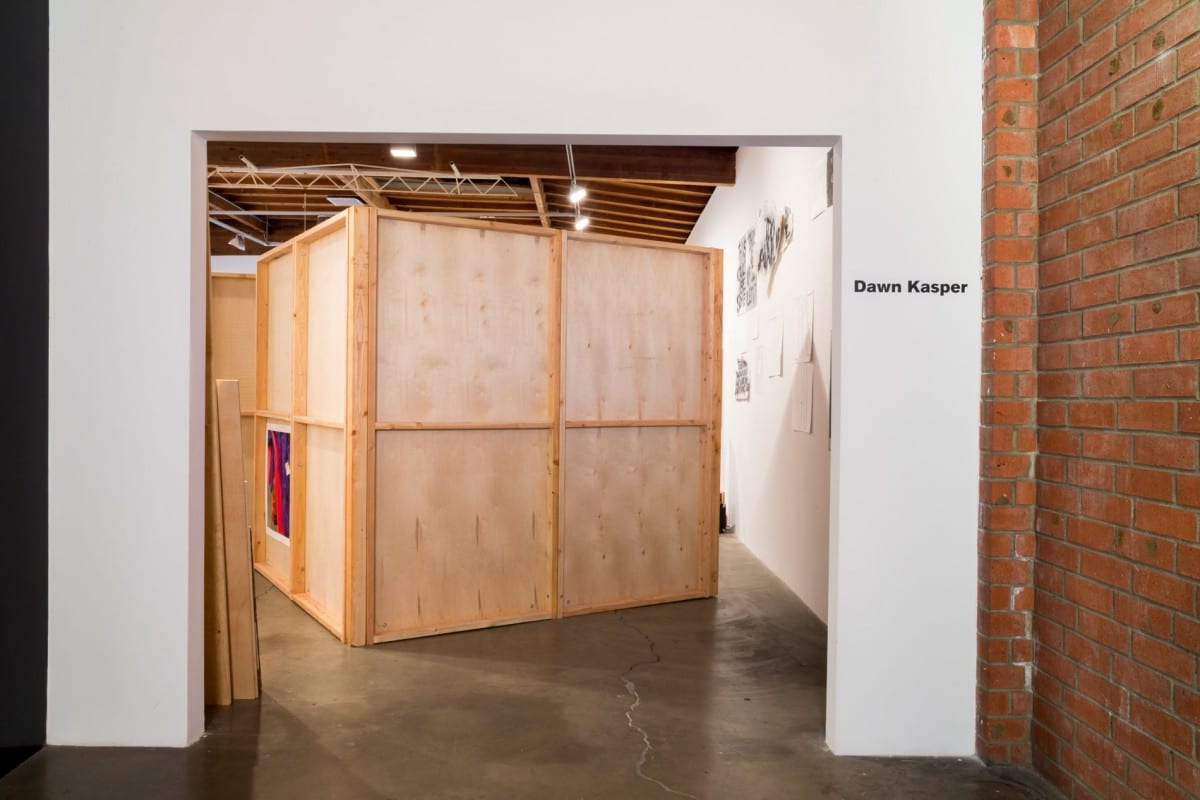
On the evening of Day 25, I knocked on the back door of the gallery and waited for Kasper to let me in. I didn’t know what to expect or what was expected of me. Was there an agenda that I needed to follow? What if I failed as a participant? When I entered the space for the first time I was surprised to find that most of the large room resembled a domestic space complete with a hot plate and a worn in couch situated next to a five foot book shelf that was filled from top to bottom with titles ranging from topics of art theory, philosophy and criticism. Some of the titles I discovered and recognized were Camille Paglia’s Sexual Personae, The Philosophy of Andy Warhol, Heidegger’s Being and Time and of course Camus’ Myth of Sisyphus. A flat panel television in the back corner of the gallery played a VHS version of Taxi Driver and was barely audible. Travis Bickle repeatedly reached into his jacket to retrieve the automated holster he had crafted.
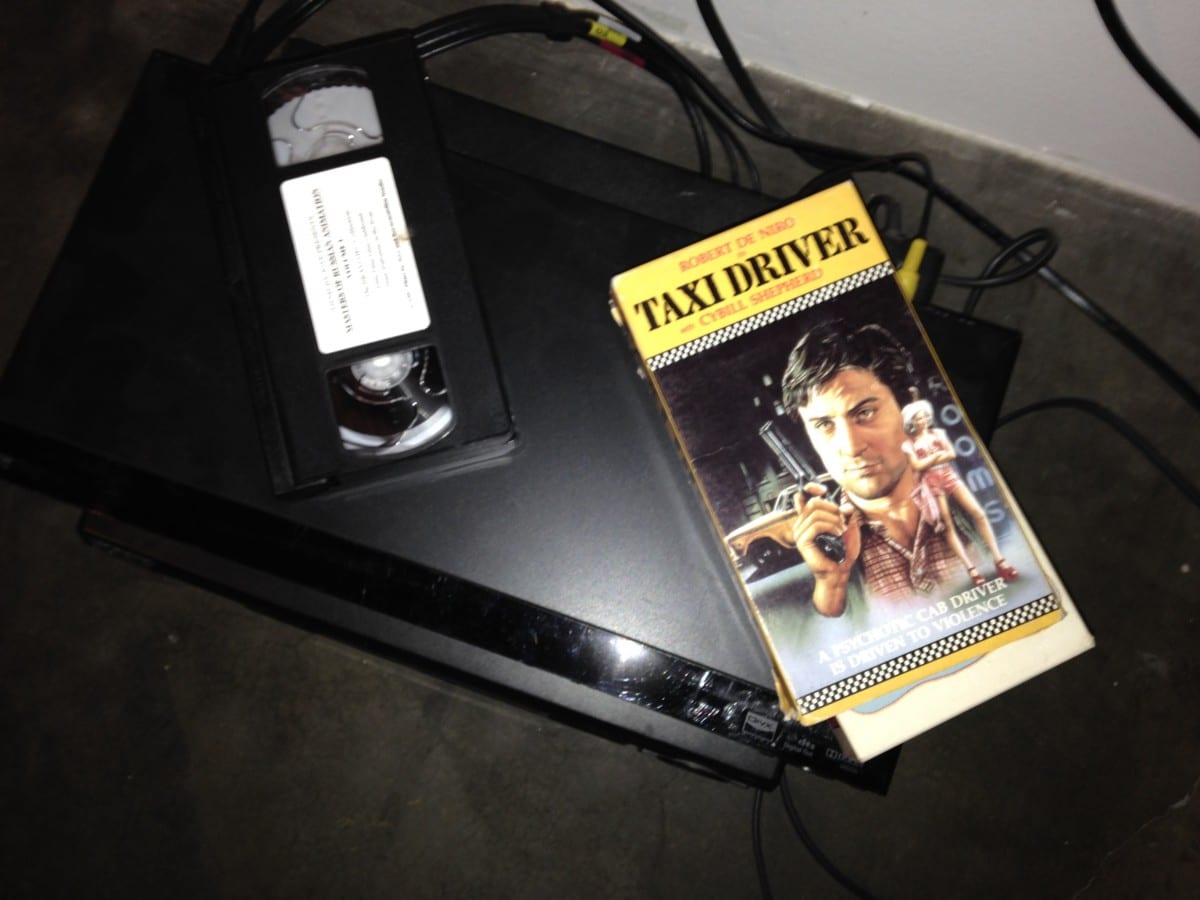
I wandered in between the mazes of the cubes. A lone kick drum and a fractured crash cymbal occupied one of the spaces. A laundry basket filled with drum sticks was placed nearby. The temptation to hit the cymbal was too great and it’s sound reverberated like an echo with the partially enclosed structure. In the adjacent cube was an amplifier, and Kasper was placing a flat microphone on the wood panel to amplify the sounds within the grains of the wood. A turntable playing whale songs hummed in the room. Composer, performer and artist Jules Gimbrone arrived shortly after I had a chance to survey the space. He carried with him an eight foot plastic tube that he began to play. Sitting on the floor he positioned the opening of the tube against one of the microphones that Kasper was using earlier and created a low, droning and ominous tone. There was no time signature, no metronome, only instinct. Kasper picked up a bass drum and slammed it on the floor and then hit it with deliberate strikes creating echoes throughout the room. She then moved over to the microphone attached to the PA system and allowed her to voice to run up and down scales and vowels. Watching Kasper, I admired her conviction and her complete fearlessness to embrace a moment that was not dictated by rules but truly embraced the spontaneity of the moment. I returned to THE ABSURD at 11 pm on October 18 to formally interview the artist, which inevitably became a part of her performance. As Kasper’s performance became a dialogue, so too this piece is also a dialogue of sorts.

Interview with Dawn Kasper
Installation Magazine: How have your previous performances informed the architecture for THE ABSURD?
Dawn Kasper: One aspect was through my thesis show, about ten years ago now, where I made about half of one of the cubes which consisted of two 4 x 8 panels that comprised the floor and 3 that became the wall, and then that was a stage. And an action occurred, and an action made it a sculpture. And so I toyed with that as my thesis show, and it had a performative element with drawings and photographs and video, and it was a piece that was called -I work serially- the Love Series meets the Evil Series. At the time I had been doing a lot of research with Weegee and B Horror films and re-creating these scenarios and scenes. The show featured clues that you could inevitably or potentially piece together and try to determine what the outcome was or what had happened there. You came upon the scene after something had happened and then it put the viewer inadvertently in a position of being a forensic scientist or detective or something. It was a risk, but I didn’t necessarily at that point in my education take into account the audience. Over the years I’ve been trying to consider an audience more and more, and as a performer, I’m really trying to take that energy or potential into account. It’s been effective.
What have you learned throughout the course of the exhibition?
This piece has really been a transition because it’s a collection of previous data. Everything in this room was either created while in performance or was used in a performance in some way, shape, or form, so it may seem somewhat domestic but it does have this intention and it does, in my opinion, carry this sort of pre-existing energy with it. I’m interested in that dynamic, and also in the way that I, in this space, over the course of these six weeks that I’ve been here, I’m really trying to take an inventory of that process. It’s very much past, present, and future. It’s simultaneous because I have a lot of ephemera and a lot of residue of performances so that’s there, and it’s past; and the present is this experience, this exchange, which then in turn becomes a performance, because I am addressing the task at hand. In a sense, that is where you begin and end in that , as a viewer, or a patron, it’s almost like a “choose your own adventure.” You may have a goal, like the goal was this interview, but then in the conversation, how the conversation affects the movement of being in this present moment, for example the representation, a physical representation of that on my obsessive compulsive nature to want to do something with these flats. And in a sense, activate them, and how it came to the natural configuration of the three cubes. It was really something that I had been working with, and then it felt like it was building to this moment of me wanting to build a room within a room, and that’s still a goal: I want to build a space to perform in. So those three cubes were almost attempts at trying to formalize that. Because I’m in a room and I am performing in a room, but I would like to be able to isolate that and say that this is designed specifically for this action, this one action, like I am doing this one way of making this one lasagna, and that’s the pieces. It’s not gonna be like ten lasagnas. You know? It’s just like this one piece. And I think I’m getting to that point, but this piece is really clarifying that. Because I have past performances and then I have this present performance, and then the future is, who knows what’s gonna happen tomorrow or an hour from now, I mean that’s inevitable, even that was now, what we just talked about was just, is now, the past. I can never be all of those places at once; I can never be past present and future, simultaneously.
You mention this “residue”of performance and how that was archived or documented through photos, and looking at this flat now, they have footprints on them, they’ve been knocked around. It’s as though the past, present and future exist in the same place at the same time. Because you remember how this room looked before, when you started building, and you probably have distinct memories of each panel even though they were in different places all the time.
I’m learning. It’s exercises in a sense. It’s been really really good. I’ve had a series of really exceptional, challenging moments. In order to move forward, it’s not easy. And I believe everything comes to make us move forward. We’re constantly in motion and how I choose to be a part of that or not, it’s up to me. I get what I put into it. I get out of it what I put into it. Not even to say that I have this expectation of actually getting anything out of it, that’s not why I do it. And then not is to say that the grounding force that’s driving this installation is inspired by an existential philosophical text by Albert Camus called the Myth of Sisyphus, very specifically the essay that is called The Myth of Sisyphus I mean it’s a couple of pages but it’s incredible. In the whole series of essays Camus is talking about this absurd hero or this absurd man or giving examples of how we are this absurd man, we’re enacting this absurdity of desire. It’s in our nature, I think, to participate in this day to day monotony, asking “what’s it all mean? why are we? what’s the point? who are we?” The big questions. And it’s grounding to hear all these different sorts of theories. There’s so many ways of approaching how I choose to wake up and how I choose to inhabit and where I choose to inhabit, and what I chose to interact with, and those things are real, to me, and I don’t necessarily have answers. That’s what’s so relieving in a sense, it’s not necessarily about that, it’s more or less for me about the seeking and I’m never satisfied and I think that’s what drives me and keeps me fighting.
In what ways do you identify with Camus’ absurd hero?
It’s very existential. And that’s what this this specific essay, The Myth of Sisyphus, is. This martyred, absurd hero, condemned to pushing and doing what the gods would deem as some laborious workman act, and that’s his torture, to be a worker among workers? The boulder is that “day-job” in a sense, and so he pushes this boulder, only to watch it rolling down. And there is this moment where Camus spotlights this moment of interest to him, when Sisyphus has to walk back down the mountain to meet his fate. Which is pushing the boulder again, and he’s straining and you imagine his face and the pushing and then he gets it up and it rolls back down: there’s that moment where he has this sort of victory, and I’m beginning to really think about that time in between when I’m moving these flats around, and I created this algorithm that’s a sort of analogy or randomized algorithm where it’s like “the artist is to Sisyphus as the boulder is to the art.” I’ve chosen to make these ridiculously heavy thoughts, they’re more like stages, and so I’ve already made it a little bit more complicated and a little bit more laborious than it really technically needs to be, but then I’ve chosen to also then move it around and rearrange it and take it apart and fuck it up and then invite people to maybe help me, and then it’s funny. And then it becomes a conversation about that negotiation. So then I begin to realize that, after all of that, I go home and I go to sleep and then I come back and I do it all again.
But do you think, in visualizing this myth, that the task isn’t so much that he’s working really hard, but that he has to see it? The boulder is always in front of him, and he’s always pushing it and that it’s this enormous mass that you confront each day. You are literally and physically confronted with this task that you know has to move forward. But even when it moves back it’s still moving forward.
Yes, exactly. There is still progress because he still turns around going back down to do it again. And it’s in that moment that makes us a tiny hero in a way.
Following our interview Dawn Kasper composed her reflections on THE ABSURD.
The ABSURD Commentary by Dawn Kasper
In conclusion: Sisyphus was happy.
All Sisyphus’ silent joy is contained therein. His fate belongs to him. His rock is his thing. Likewise, the absurd man, when he contemplates his torment, silences all the idols.
– Albert Camus, The Myth of Sisyphus and other essays
Basically, I do this “thing” because I can. The work that I do is my thing. I do not have to explain myself to anyone. There is no point. There is no higher power telling what to do and what not to do. I have no one to answer to at the end of the day except for myself. I am responsible for my own actions. Past that life is a bonus. Life is a gift. My friends are a gift. My family a gift. I am constantly surprised every day. Honestly, like a kid on the first day of school. I both hate my life and love it. This is my fate. I am the absurd man. I am the absurd hero. I will continue to do what I do. Simply because I can.
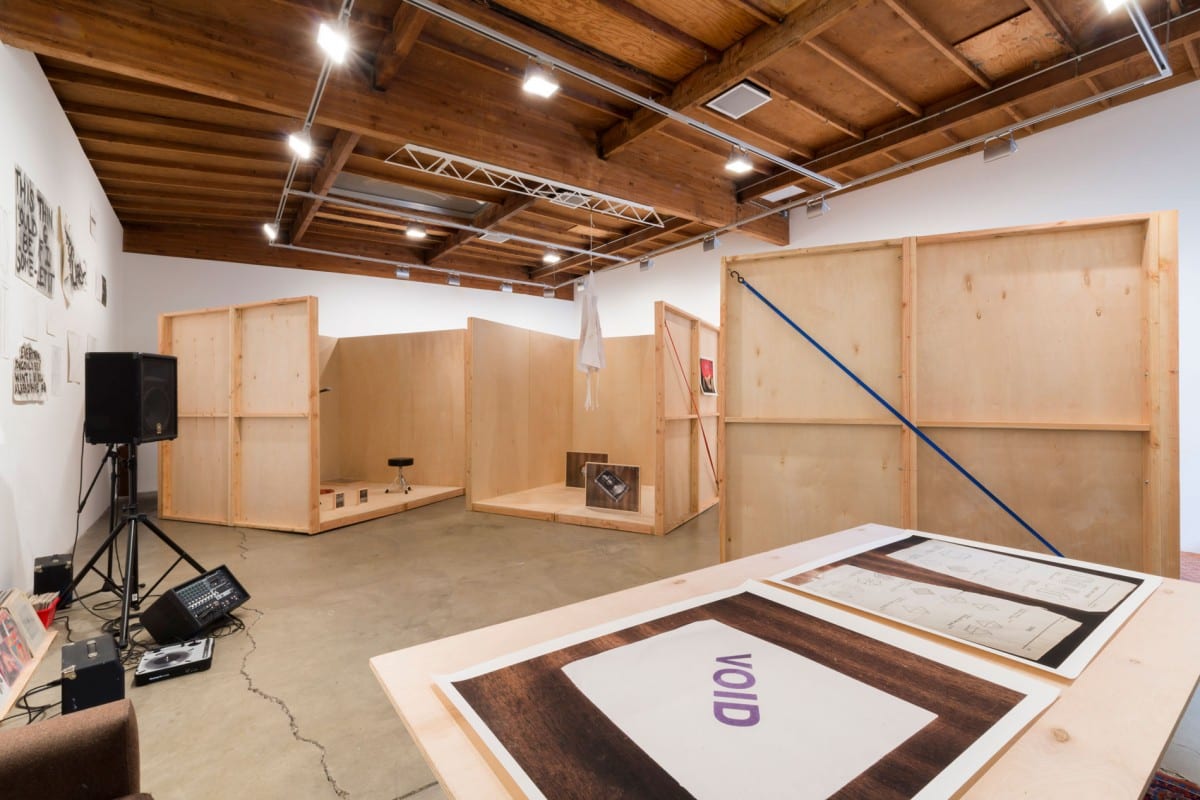
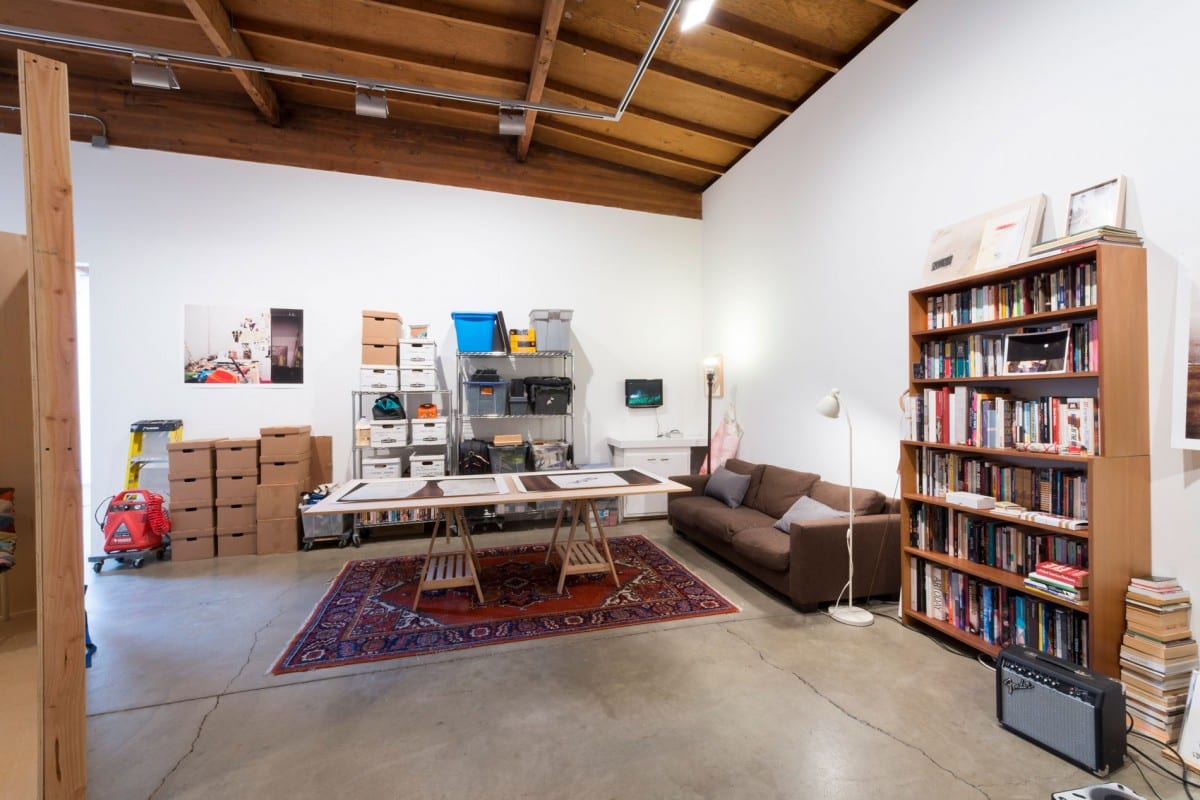
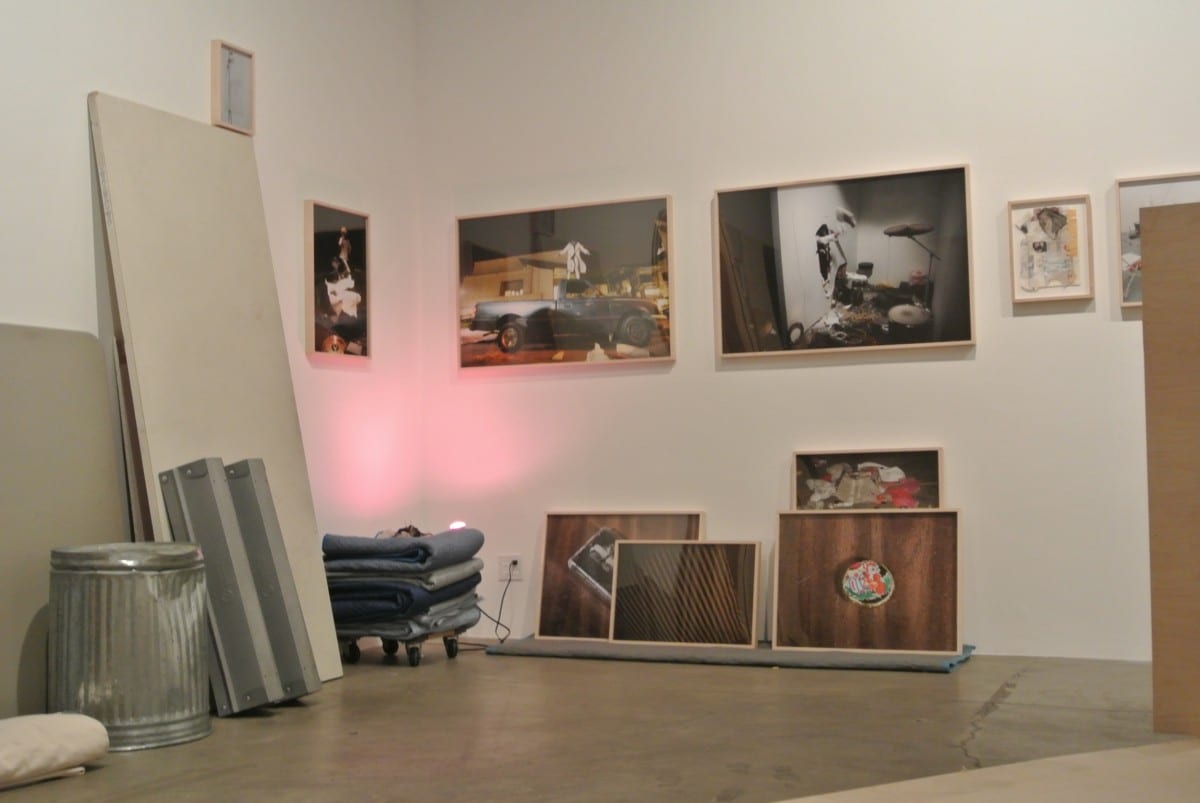
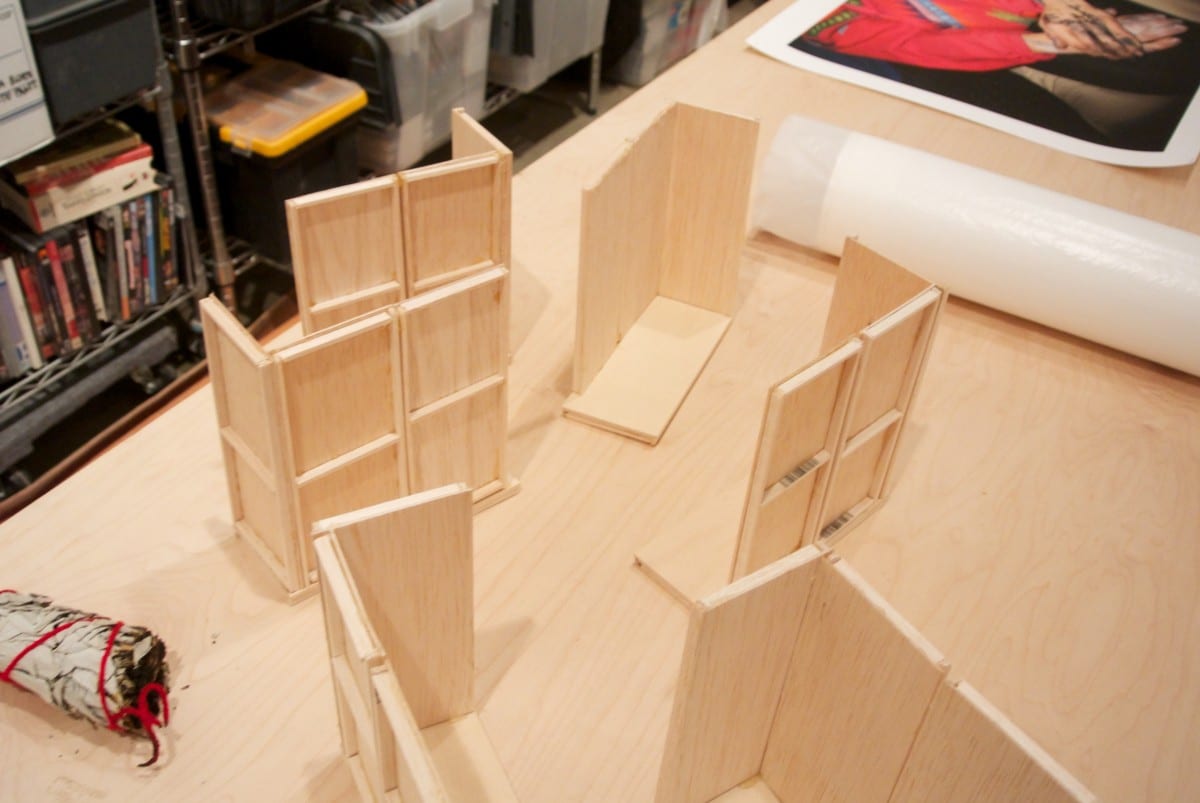
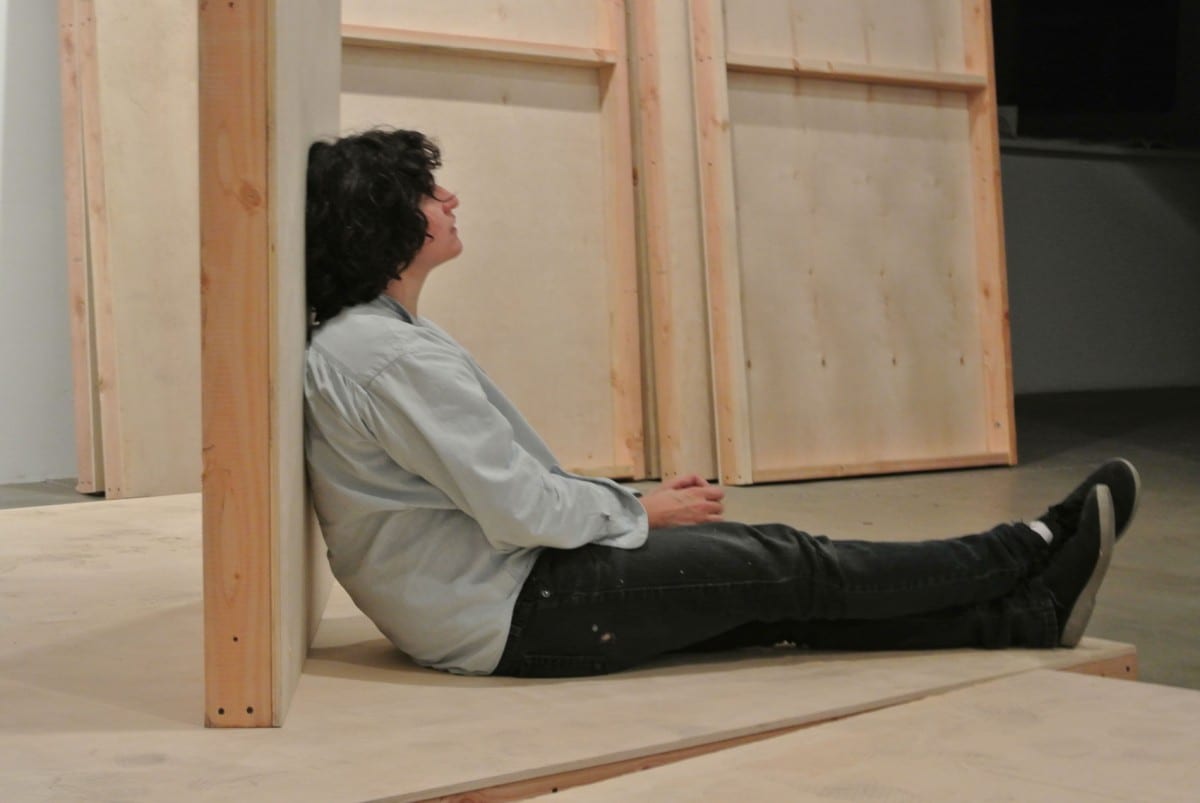
Featured Video: Dawn Kasper, THE ABSURD, Honor Fraser Gallery ©Installation Magazine
